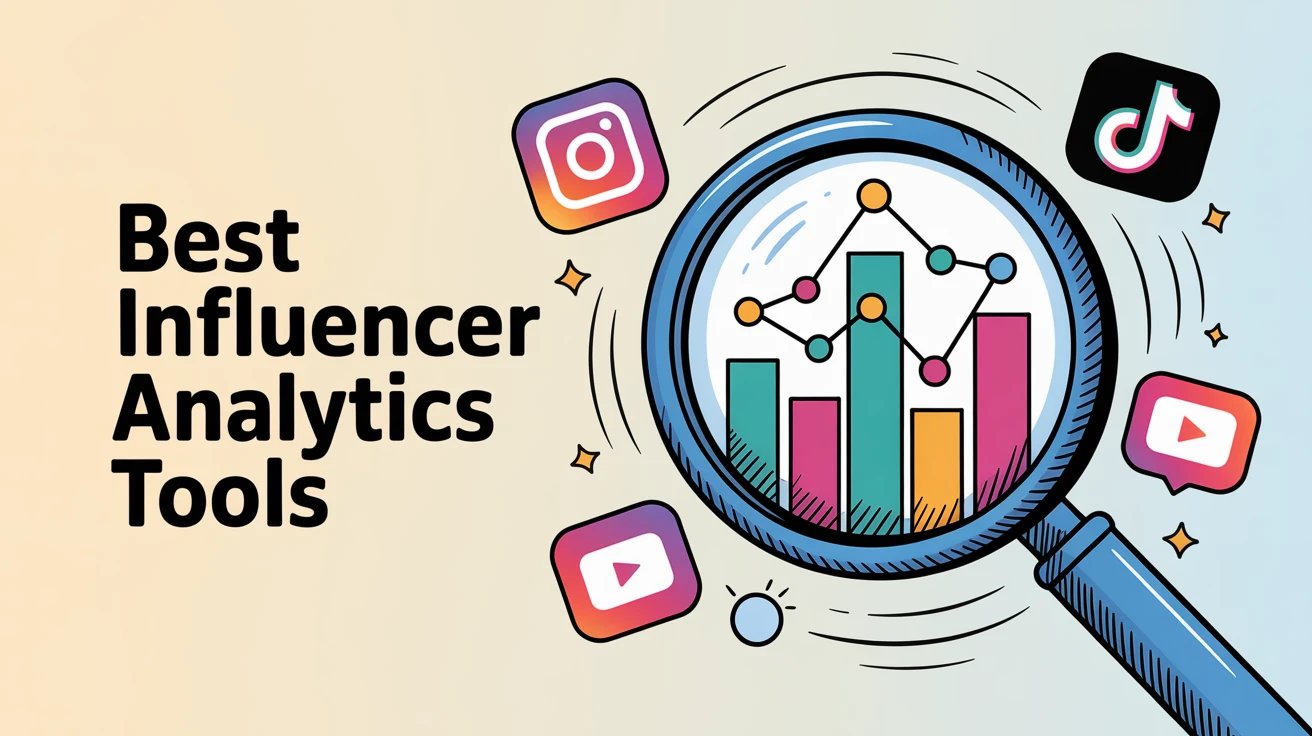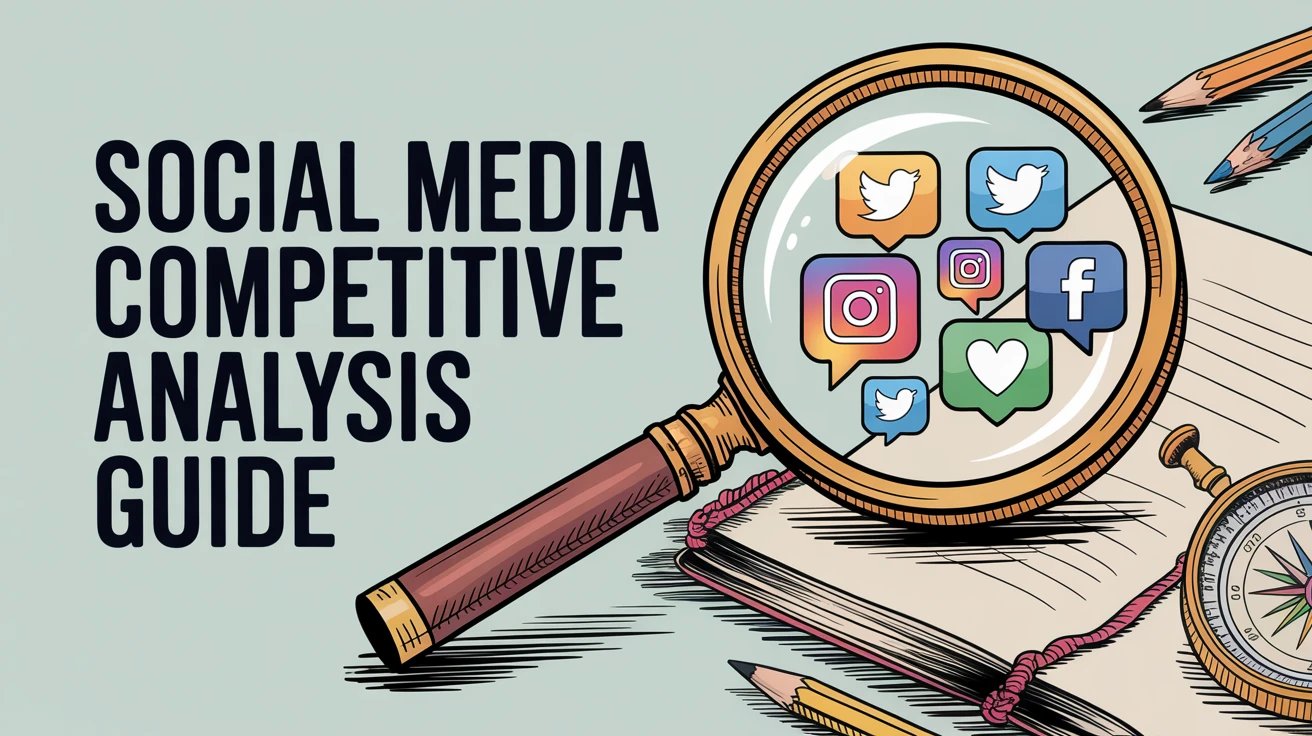Think your social media posts are doing well? Without tracking engagement, you’re just guessing.
Social media engagement tracking helps you see what content your audience actually cares about, so you can do more of what works, and less of what doesn’t.
With over 5.42 billion social media users projected globally by 2025, the competition for attention is intense. And it’s not just about reach, businesses that actively engage their audience see better retention and stronger customer relationships over time.
In this guide, we’ll break down why engagement tracking matters, what metrics to focus on, and the best tools to help you track performance and make smarter content decisions.
What is Social Media Engagement Tracking?
Social media engagement tracking is all about watching how users connect with your content on various social media platforms like TikTok and Instagram.
By looking at engagement metrics, you can see how well your posts, campaigns, and overall social media strategy are performing.
Taking note of likes, comments, shares, and other interactions allows businesses to better understand their audience’s reactions to their content.
Types of Interactions Tracked
- Likes and Reactions: The simplest form of engagement. Likes reflect how much your audience appreciates a post.
- Comments: Engaging comments indicate deeper interaction and potential customer interest.
- Shares: A sign of endorsement, shares amplify content across users’ networks.
- Click-through Rates (CTR): The percentage of people who clicked a link in your post.
- Mentions: How often is your brand discussed or tagged on social platforms?
- Video Views: Tracking the number of views on video content gives insights into content appeal.
Why You Should Measure Social Media Engagement
If you’re not tracking engagement, you’re guessing. And in the fast world of social media, guessing doesn’t cut it. Here’s why measuring engagement is a game-changer.
Understand Your Audience
Social media engagement tracking provides valuable insights into who your audience is, what they like, and how they behave online.
By examining the types of content that generate the most engagement, brands can refine their strategies to match their audience’s interests.
Research shows that the success of top B2B marketers is due to their understanding of their audience and their ability to tune their marketing strategy accordingly.
For example, if your target market engages more with video content than static images, you’ll know to prioritize video production.
Prove and Improve ROI
Tracking engagement is crucial for proving the social media ROI of your campaign efforts.
Measuring engagement can help determine whether your advertising spend is driving the desired results if you’re running paid social campaigns.
Additionally, engagement data provides actionable insights to refine strategies, boost performance, and improve ROI.
Build Loyalty and Advocacy
Social media engagement is also essential for building brand loyalty. Customers who engage with your content feel connected to your brand.
And having loyal customers means more revenue, as they spend 67% more on a product or service they trust.
Over time, this connection can lead to brand advocacy, where engaged users promote your products or services to their networks.
Strong engagement fosters trust, turning casual customers into repeat buyers and vocal advocates.
Benchmark Against Competitors
Competitor social media monitoring allows businesses to benchmark their performance against competitors.
By tracking engagement across similar brands in your industry, you can identify trends, learn from others’ successes and mistakes, and adjust your strategies accordingly.
For example, if your competitor’s Instagram post gets significantly more shares than yours, it may be worth investigating what they’re doing differently.
Spot and Manage Crises
Monitoring engagement also helps businesses identify potential issues quickly.
A sudden drop in engagement or negative comments can be an early warning sign of a PR crisis or customer dissatisfaction.
By keeping a pulse on engagement, businesses can respond quickly to mitigate damage and manage crises more effectively.
Optimizing Content for Better Performance
By continuously tracking social media performance and analysis of engagement, businesses can identify which types of content resonate most with their audience.
This enables content optimization, whether changing the messaging, improving the quality of visuals, or posting at different times.
A data-driven content strategy is more likely to deliver results than one based on guesswork.
Key Social Media Engagement Metrics to Track
Measuring social media engagement starts with knowing what to look for. These core metrics will help you evaluate performance, understand audience behavior, and guide smarter content decisions.
Audience Growth
- Follower Count & Growth Rate: These metrics show how well your social media presence is expanding. Tracking your follower growth over time can help assess the effectiveness of your outreach and content strategy.
- Audience Size: The total number of followers gives a general sense of your reach and visibility.
Customer Satisfaction
- Reply Time & Response Volume: Monitoring your response times and the number of responses to inquiries can help gauge customer satisfaction. A fast response time generally leads to better engagement and customer loyalty.
- Comments & CSAT (Customer Satisfaction Score): Engaging with comments and calculating customer satisfaction scores are key to understanding how your audience feels about your brand.
Awareness Metrics
- Impressions & Reach: Impressions track how many times a post has been seen, while reach measures how many unique users saw the post. These are essential for assessing the effectiveness of your brand awareness campaigns.
- Video Views: Video content can drive high engagement, and tracking views helps assess its effectiveness in reaching and engaging users.
Engagement Metrics
- Post Engagement Rate: This is the percentage of people who interacted with your post out of those who saw it. It’s a key indicator of how well your content resonates with your audience.
- Likes, Comments, Shares, Reactions: These are basic engagement indicators that give a quick snapshot of how your audience feels about your content.
- Video Completion Rate: The percentage of people who watched your video from start to finish. This is especially important for brands using video as a core content strategy.
ROI Metrics
- Conversion Rate: This metric measures the percentage of users who complete a desired action (e.g., making a purchase or signing up for a newsletter) after engaging with a post.
- Social Media Referral Traffic: This metric tracks how much traffic is being driven to your website from social media platforms.
- Website Traffic: Analyzing how much traffic comes from social channels helps determine which platforms are most effective for driving website visits.
Brand Health Metrics
- Sentiment Analysis: Social media sentiment analysis tools track the positive, negative, or neutral tone of comments and mentions about your brand, providing insights into overall public perception.
- Brand Mentions: The number of times your brand is mentioned across social media platforms indicates awareness and public interest.
- Share of Voice (SSoV): This metric shows how much of the conversation in your industry is about your brand compared to competitors.
Paid Social Metrics
- CTR (Click-through Rate): This shows how often users click on the links within your paid social ads.
- CPC (Cost per Click): Measures how much you pay each time someone clicks on your ad.
- ROAS (Return on Ad Spend): This metric helps determine the profitability of your paid campaigns by comparing the revenue generated to the amount spent on ads.
- Web Conversions: Conversion tracking from paid ads measures how many website actions were taken due to an ad.
How to Measure Social Media Engagement Effectively
Accurate measurement isn’t just about collecting data. It’s about interpreting it in a way that drives action. Here’s how to measure engagement in a way that actually moves the needle.
Step 1: Set Clear Goals and Objectives
Establishing clear objectives is essential for measuring engagement accurately. Define your goals: increasing brand awareness, driving traffic to your website, or generating leads. These goals should guide the metrics you choose to track.
Step 2: Choose the Right KPIs
Select key social media KPIs that align with your business objectives. Whether it’s conversion rate for sales or post engagement for community building, KPIs give you a measurable way to assess success.
Step 3: Use Analytics Tools
There are numerous tools available to help measure social media engagement. Use native platform analytics (e.g., Meta Insights, TikTok Analytics) or third-party tools like Sprout Social, Sprinklr, or Google Analytics to gain comprehensive insights.
Step 4: Monitor Regularly & Analyze Trends
Engagement tracking isn’t a one-time activity. Set a weekly, monthly, or quarterly reporting cadence, and track performance trends to identify patterns and adjust strategies as needed.
Step 5: Experiment and Adapt
Test different content types, formats, and publishing times. A/B testing is an excellent way to optimize performance. Be open to revising strategies based on data insights.
Step 6: Calculate Engagement Rate
The engagement rate is one of the most valuable metrics. Calculate it using the formula: (Total Engagements / Total Followers) x 100. Although you don’t need to calculate this independently, tools like Shortimize can provide these and other in-depth metrics that platforms don’t provide.
Common Challenges in Social Media Engagement Tracking
- Over-Reliance on Vanity Metrics: Metrics like follower count and likes don’t always reflect the actual effectiveness of your social media efforts.
- Inconsistent Measurement Across Platforms: Different platforms offer varying analytics tools, making it challenging to track engagement uniformly.
- Data Overload: With so many metrics available, it’s easy to become overwhelmed. Focus on key metrics that directly contribute to your goals.
- Misinterpreting Engagement Spikes: A sudden spike in engagement could be a one-time event or an outlier. Always analyze the broader context.
Future Trends
- AI-Powered Personalization and Content Matching: Machine learning algorithms will continue to refine the personalization of social media content.
- Real-Time Engagement Dashboards: Expect to see more dynamic, real-time dashboards that give instant insights into engagement across platforms.
- Interactive and Immersive Engagement Formats: Polls, quizzes, and interactive videos are on the rise, creating more ways for users to engage with brands.
- In-App Social Commerce and Conversion Tracking: Social platforms will increasingly support in-app purchases, making conversion tracking more seamless.
Ending Notes: Social Media Engagement Tracking
Social media engagement tracking is more than just counting likes and comments. It’s about understanding your audience, improving content strategies, and proving the ROI of your social media marketing efforts.
By leveraging the right metrics and tools, businesses can build better relationships with their audience, stay ahead of competitors, and adapt to the ever-changing landscape of social media.
Remember, social media is an ongoing experiment. The more you measure, test, and refine, the more effective your strategy will become.
For businesses looking to improve social media engagement and drive better results, it’s crucial to approach tracking strategically and utilize the best tools and practices.
People Also Ask
How can I check engagement on social media?
You can view engagement directly on each platform’s analytics dashboard by looking at metrics like likes, comments, shares, and saves.
What’s a good tool to track social media engagement?
Shortimize is a great option, it helps you monitor post-performance and engagement metrics across platforms quickly and easily.
How do you measure engagement on a social media post?
Track actions like reactions, comments, shares, and clicks on each post to see how your audience is interacting with your content.


